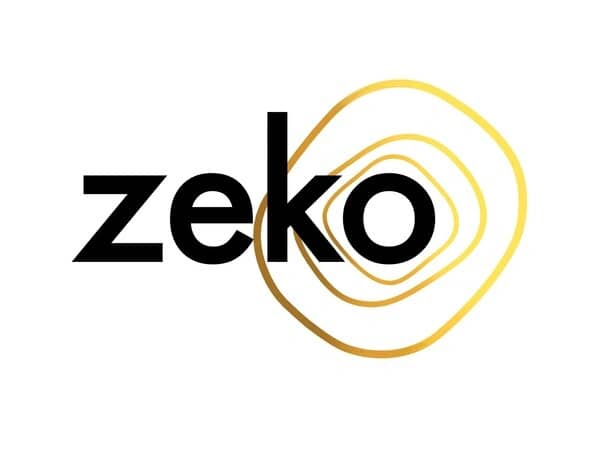Subscribe to wiki
Share wiki
Bookmark
Zeko Protocol
Zeko Protocol
Zeko Protocol is a Layer 2 ecosystem built on the Mina Protocol, designed to enhance privacy and scalability by leveraging advanced zero-knowledge proofs. The protocol aims to make zero-knowledge technology and Layer 2 scaling more accessible for developers and users operating within the Mina ecosystem. [1]
Overview
Zeko Protocol is an open-source project developed and maintained by Zeko Labs. As a zk-rollup, Zeko is focused on bringing advanced programmability and composability to the Mina ecosystem. It is positioned as a developer-centric and community-driven platform, providing a suite of tools and documentation to facilitate the creation of applications on its network. [2] The core objective of the protocol is to enable efficient, secure, and scalable transactions through its Layer 2 architecture. By handling transactions off the main Mina blockchain, Zeko aims to increase throughput and operational efficiency beyond what is possible on the Layer 1 chain alone. The project's source code is released under the MIT License, promoting transparency and encouraging community participation in its development and governance. [1]
Products
The Zeko Protocol ecosystem provides a suite of developer-focused tools rather than distinct, standalone products. These resources are designed to lower the barrier to entry for building zk-powered applications on the platform. Key offerings include:
- Zeko Prover: A core component that handles proof generation and recursion, allowing developers to verify computations across different blockchains and rollups. [2]
- Zeko SDK: A software development kit that offers the necessary tools, APIs, and libraries for developers. It enables them to write and deploy applications in various programming languages to the Zeko L2 or create their own custom zkAppChains. [2]
These resources are supported by comprehensive documentation, API references, and code examples to guide developers. [1]
Features
Zeko Protocol's design is centered on its use of zero-knowledge technology and its Layer 2 structure. Its main features include:
- Recursive Zero-Knowledge Proofs: The protocol integrates advanced zero-knowledge proofs, specifically recursive proofs, as a fundamental component. This technology is utilized to provide privacy for transactions and allows developers to prove and bridge any computation across different blockchains, app-chains, or roll-ups, enhancing cross-chain composability. [2]
- Layer 2 Scaling: As a Layer 2 solution, Zeko is engineered to process transactions off the main Mina blockchain. This off-chain execution model is designed to increase transaction throughput and improve efficiency for applications built on the protocol. [1]
- Parallel Transaction Processing: The protocol's architecture supports parallel proving, which allows for higher throughput compared to sequential processing, contributing to the network's overall scalability and performance. [3]
- Developer-Focused Environment: The protocol emphasizes a developer-friendly experience by providing extensive guides, tools, and documentation. This focus is intended to simplify the process of building and deploying applications that leverage zero-knowledge proofs. [1]
- Open and Community-Driven: Zeko operates as an open-source project, which allows for public review of its codebase and invites community members to contribute to its ongoing development and governance processes. [1]
These features are designed to create a scalable and private environment for decentralized applications. [2]
Ecosystem
The Zeko Protocol ecosystem is designed to support developers in building and deploying zkApps. It is built to be isomorphic to Mina, giving developers access to established tools and infrastructure. Key components of the ecosystem include:
- o1js: A TypeScript library for writing zero-knowledge smart contracts (zkApps), which is a central tool for developers building on Zeko. [2]
- Wallets: The protocol supports wallet integration, with a faucet available for developers to obtain testnet funds and begin building on the network. [2]
- Infrastructure Partners: The protocol is built upon the Mina Protocol, leveraging its enterprise-grade cryptography and fast state verification. [4]
The ecosystem is supported by a community of builders focused on developing applications and enhancing the user experience. [2]
Use Cases
While the official documentation does not list specific, implemented use cases, the protocol's core features of privacy and scalability suggest its suitability for a range of applications. Potential use cases would likely involve scenarios that require confidential transactions, high throughput, and low transaction costs, such as in decentralized AI, gaming, and finance. [2] [1]
Architecture
The high-level architectural concept of Zeko Protocol is a Layer 2 network that settles transactions on its underlying Layer 1, the Mina Protocol. It uses zero-knowledge proofs to ensure the validity and integrity of the computations and transactions that are processed off-chain. This model allows the Layer 2 network to inherit the security of the Mina blockchain while providing its own environment for scalable execution. Detailed specifications of its architectural components are not provided in the general documentation. [1]
Tokenomics
Information regarding a native token for the Zeko Protocol is not available in the provided documentation. Details concerning token allocation, specific utilities, or a governance model have not been publicly released. [1]
Partnerships
Zeko Protocol collaborates with key organizations within the Mina ecosystem to advance its development and adoption. Notable partners include:
- Mina Foundation: As Zeko is built on the Mina Protocol, it maintains a foundational relationship with the Mina Foundation, which supports the underlying Layer 1 blockchain. [4]
- o1Labs: The creators of the Mina Protocol and the o1js library, o1Labs provides the core technology that Zeko developers use to build zkApps, making them a crucial technical partner. [2]
Backers
Zeko Protocol is supported by several venture capital firms and foundations, including:
- UOB Venture Management
- Signum Capital
- YBB Foundation These organizations have provided backing for the project's development and growth. [2]
See something wrong?
